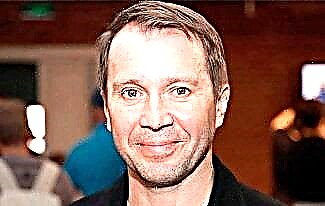The opinion of people about psychics is similar to faith in God - it depends not on the phenomenon, but on the attitude of the person himself towards him. Apart from the facts of small physiological changes recorded by scientists in people who call themselves psychics or claim to have paranormal abilities, there is no scientific evidence of such abilities.
On the other hand, any person has ever encountered events or actions that are inexplicable from a rational, scientific point of view. Everyone has had wonderful coincidences or incomprehensible sensations, thoughts or insights that spontaneously come to mind. For some, this happens more often, for others less often, but such things happen.

Some of the psychics really have some abilities, but much more often people who want to make money by fooling others dress up in their guise. The fact that there are much more scammers is confirmed by the million dollars still in the fund of the famous magician James Randi. The illusionist established the foundation in 1996, promising to pay a million to anyone who demonstrates paranormal skills under the independent supervision of scientists. Psychics in their books on this matter only write that they are afraid of incorrect experiments.

James Randi is waiting for a millionaire
1. Paracelsus, who lived in the 16th century, could heal the sick in a non-contact way. He argued that wounds, fractures and even cancer can be treated by moving a magnet over the damaged area of the body. His students and followers R. Fludd and O. Helmont no longer used the magnet. They allegedly discovered a special fluid that some organs and parts of the human body emit. The fluid was called magnetism, and people who knew how to use it were called magnetisers.

Paracelsus
2. Roza Kuleshova demonstrated amazing psychic abilities in the USSR. Having learned to read in Braille (a special raised font for the blind), she tried to read an ordinary book in the same way. And it turned out that she can read printed text and see images with almost any part of her body, and for this she does not even need to touch the paper. Kuleshova was a simple woman (education - amateur art courses) and could not clearly explain the nature of the phenomenon. According to her, images were born in her brain, which she “read”. Scientists could neither expose Kulagina, nor understand the nature of her abilities. The young woman (she died at 38) was literally persecuted, accused of all mortal sins.

Roza Kuleshova
3. The name and Ninel Kulagina thundered throughout the Soviet Union. A middle-aged woman could move small objects without touching them, stop the frog's heart, name the numbers that were shown behind her, etc. Soviet newspapers, surprisingly, were divided in opinion. For example, Komsomolskaya Pravda and the regional press (Kulagina was from Leningrad) supported the woman, despite the fact that Pravda published articles in which Kulagina was called a swindler and a swindler. Kulagina herself, like Kuleshova, could not explain her phenomenon. She did not try to derive any benefit from her abilities and willingly agreed to the proposed experiments, although after them she felt very bad. After one of the demonstrations of her gift to scientists, among whom were three academicians, her blood pressure readings were 230 to 200, which is very close to a coma. The conclusions of scientists can be summarized in a short phrase: “There is something, but what is not clear.”

Ninel Kulagina moved objects even in a glass cube
4. In 1970, on the initiative of the Central Committee of the CPSU, a special Commission for the study of parapsychological phenomena was created. It included prominent physiologists, psychologists and representatives of other sciences. The psychologist Vladimir Zinchenko, who participated in the work of the Commission, recalled decades later that because of the impressions he received then, he almost lost faith in humanity. Such outspoken charlatans appeared at the meetings of the Commission that scientists, even well-disposed towards possible psychic possibilities, willy-nilly became skeptics. The Commission safely drowned in a sea of "evidence" of parapsychological abilities.
5. The famous writer Stefan Zweig wrote that all experiments on telekinesis and telepathy, all clairvoyants, all sleepwalkers and those who broadcast in a dream trace their ancestry from the experiments of Franz Mesmer. Mesmer's ability to heal by "redistributing fluids" is clearly exaggerated, but he made a lot of noise in Paris at the end of the 18th century, managing to gain the trust of many aristocrats up to the queen. Mesmer saw the reasons for the incomprehensible actions that people immersed in trance performed in pure physiology. His students have already thought about the psychological reasons for such actions and the nature of the trance itself.

Franz Mesmer was the first to put the case on a commercial basis
6. A serious blow to the supporters of the theory of magnetism and followers of Mesmer was struck in the middle of the 19th century by the Scottish physician James Braid. Through numerous experiments, he proved that the immersion of a person in a hypnotic trance does not in any way depend on the hypnotist. Braid forced subjects to look at a shiny object placed above eye level. This was quite enough to hypnotize a person without the use of magnets, electricity, hand passes and other actions. However, Braid lagged a little behind the wave of exposing mesmerism and was slightly ahead of the world-wide hysteria of spiritualism, so his achievement passed by the general public.

James Braid
7. Theories of communication with spirits have existed for hundreds of years in many religions, but spiritualism spread throughout the world (the correct name for this cult is “spiritualism”, but there are at least two spiritualisms, so we will use a more familiar name) was like an infectious disease. In a matter of years, starting in 1848, spiritualism conquered the minds and souls of millions of people. Hands were placed on the table in a dark room everywhere - from the USA to Russia. Prominent representatives and ideologues of this movement traveled around countries and continents like today's pop stars. And even now, hundreds of spiritualist churches continue to exist in Great Britain - communication with spirits continues. FM Dostoevsky described his impressions of the seances very accurately. He wrote that he does not believe in communicating with spirits, but something unusual is definitely happening at spiritualistic seances. If this unusual cannot be explained by means of science, Dostoevsky believed, then this is the trouble of science, and not a sign of deception or fraud.

8. Anyone can independently conduct the simplest spiritualistic session using a thread with a weight tied to the finger of an outstretched hand. Swinging the weight back and forth will mean a positive answer, left and right - negative. Mentally ask the spirits questions about the past or about the future - the answers within your competence and ideas about the world will be correct. The secret is that the brain, at a subconscious level, commands small movements of the arm muscles, “generating” the correct answer, from your point of view. A thread with a weight is a device for reading minds, believed in the second half of the 19th century.
9. The topic of direct transmission of thoughts in the scientific community was first raised by the English physicist William Barrett in 1876. The daughter of his neighbor in the country showed paranormal abilities that amazed the scientist. He wrote a paper on this for the British Association for the Advancement of Science. Despite Barrett's serious reputation, he was initially banned from reading the report, and then allowed to read, but was prohibited from official publication of the report. The scientist continued his research, despite the harsh criticism of his colleagues. He founded the Society for Psychical Research and wrote books on a topic that interests him. After his death, Barrett's widow began to receive messages from her late husband. The essence of the messages Florence Barrett outlined in a book published in 1937.
10. For 20 years in the late 19th and early 20th centuries, the existence of telepathy was considered proven thanks to Douglas Blackburn and George Smith. Blackburn worked as a newspaper editor and was harassed by endless paranormal talents demanding that he tell the world about their abilities. Together with Smith, they decided to fool the researchers of telepathy. With the help of simple, as it turned out later, tricks, they succeeded. The opinions of a few skeptics were not taken into account, because the experimental test looked flawless. Smith was seated in a chair on a soft pillow, blindfolded and wrapped from head to toe in several blankets. Blackburn was presented with an abstract pattern of lines and stripes. The journalist mentally conveyed the content of the drawing, and Smith copied it exactly. The fraud was exposed by Blackburn himself, who in 1908 said that he quickly copied the drawing and hid it in a pencil, which he discreetly replaced with a pencil intended for Smith. That one had a luminous plate. Pulling off the blindfold, the “telepath” copied the picture.

Uri Geller
11. An excellent example of the monetization of the parapsychological gift has been presented for almost half a century by Uri Geller. He became famous back in the 1970s for bending spoons with willpower, copying drawings hidden from him and stopping or starting the clock with a glance. Geller amassed full audiences and millions of TV audiences, earning millions of dollars. When experts began to expose his tricks little by little, he easily agreed to be examined by scientists. Studies have shown that during mental stress, Geller's body, mainly the fingers, emit some kind of energy that does not occur in ordinary people. But nothing more - this energy could not bend the metal spoon or help to see the hidden drawing. Geller's spoons were made of special soft metal, he spied on the drawings, the watch was just a trick. Revelations do not prevent Geller from making good money, acting as an authoritative guest on the psychics shows that have become popular.
12. The most popular psychic of the Soviet Union was Juna Davitashvili. Studies have confirmed its ability to quickly raise the temperature of certain parts of the body and transfer heat to another human body. This ability allowed Juna to treat certain illnesses and relieve pain through non-contact massage. Everything else - the treatment of Leonid Brezhnev and other leaders of the Soviet Union, diagnosing diseases from photographs, predicting wars and economic crises - are nothing more than rumors. Rumors are also information about her numerous state awards and high military ranks.

Juna
13. The overwhelming majority of people will not have any associations with the name of Vangeliy Gushterov. The shortened version - Wanga - is known to the whole world. The fame of a blind woman from a remote Bulgarian village who knows how to diagnose diseases, penetrate people's past and predict the future began to spread back in the years of World War II. Unlike the Soviet leaders and scientists, their Bulgarian colleagues did not dig into the essence of Vanga's gift. In 1967, she was made a civil servant and a fixed rate was established on the reception of citizens, and citizens of non-socialist countries had to pay $ 50 for a visit to Vanga instead of about 10 rubles for citizens of the CMEA member countries. The state supported Wang in every possible way and helped to replicate her predictions. Most often, these predictions were expressed in the most general form, as Nostradamus did - they can be interpreted in any way. In addition, some of Wanga's predictions contradict others. Two decades have passed since the death of Vanga, and it can be stated that many predictions, expressed more or less specifically, did not come true.

Vanga
14. Sylvia Brown is very popular in the USA. Her psychic abilities, according to Brown, allow her to predict the future, investigate crimes and read minds even on the phone (from $ 700 per hour). Brown is so popular that people make money by publishing books that expose her. Sylvia's popularity is not affected either by accusations of fraud, nor by the fact that dozens of predictions she made did not come true - Brown does not have the dexterity of Nostradamus or Wanga and makes specific statements. If she had not predicted that “Saddam Hussein is hiding in the mountains,” but would have said that “he is hiding, but he will be caught,” success would have been assured. And so the critics got another opportunity to show off - Hussein was found in the village. And the worst thing is her participation in the investigation of crimes on the air in the presence of relatives of the victims or missing. Of the 35 crimes, Brown did not help solve a single one.

Sylvia Brown
15. Russell Targ and Harold Puthoff have pulled more than $ 20 million from the CIA in 24 years, experimenting with transmitting thoughts over a distance. The project was pathetically called “Stargate”. The experiments consisted in the fact that one of the pair of subjects had to stay in the laboratory, and the other to visit various places and report it through the "mental connection". The CIA classified the research from the very beginning, but leaks did occur. The information received allowed us to state that the cases when the employee sitting in the laboratory correctly determined the location of the partner are isolated and could be coincidences.









